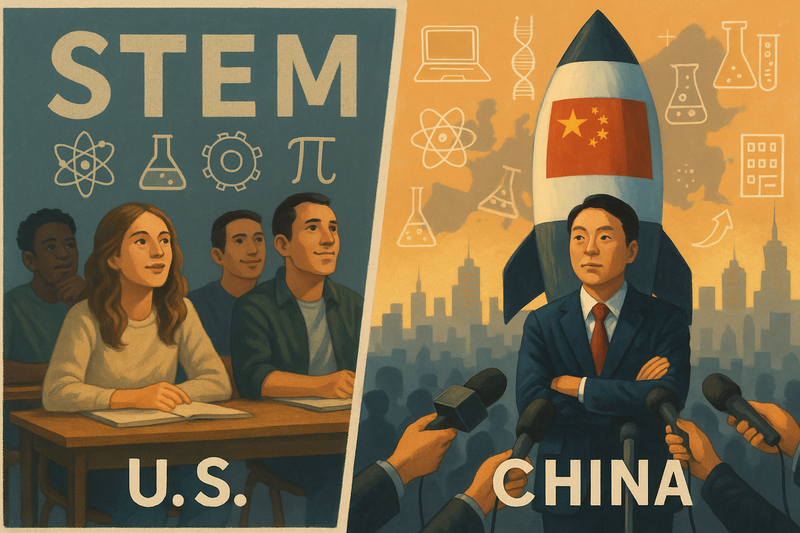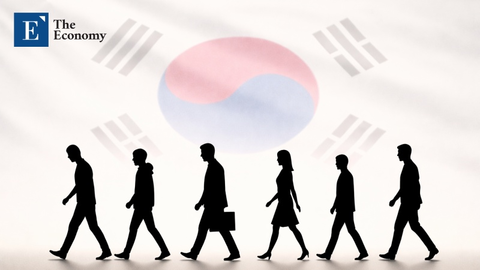The Next Frontier in the Tech War: Education
Input
Modified
One genius can create a breakthrough. Elite minds can shape national futures. The race for technological supremacy starts in the classroom.
As the global tech race accelerates, the world is beginning to recognize that the true battleground may not lie in silicon chips or supply chains, but in schools and universities. China, a nation that has long balanced quantity and quality in its education policy, is now shifting decisively toward what it calls “Elite Engineering Education.” This strategy aims to cultivate a small but influential cohort of top-tier innovators who can drive the country's transformation into a global technology superpower. At the heart of this new education model is a belief that quality, not mass production, will drive the next wave of national growth and innovation.

From Mass Education to Precision Engineering
For decades, China has focused on expanding access to education, producing millions of engineers and scientists annually. That model helped power the country’s infrastructure boom and manufacturing dominance. However, Chinese leaders are now convinced that the old model has run its course. According to an official release from the State Council, the country is investing in elite academic institutions, high-tech research centers, and specialized training pipelines to create world-class talent. The message is clear: the future belongs to the few, not the many.
This pivot is about more than prestige. It is about strategic advantage. China’s Ministry of Education has partnered with top universities to form “strategic disciplines” that align with national priorities, particularly in artificial intelligence, quantum computing, aerospace, and semiconductor technology. The goal is to develop original, foundational innovations that can position China ahead of the United States and its allies. Already, Chinese universities are increasing their admission thresholds for key engineering programs while doubling down on mentorship, research funding, and international collaboration.
The phrase gaining traction among policymakers is: "One genius can build the system that employs 100,000 good engineers, who in turn support half a million people." This sums up the new logic behind China’s educational policy. The success of this model could turn the tide in the ongoing tech rivalry, particularly as both nations strive to secure dominance in next-generation fields.
A Growing Market Demands a Smarter Workforce
This transformation occurs at a time when the Chinese tech market is experiencing rapid expansion. According to data cited in recent industry reports, China's computing infrastructure, AI development, and digital services are expected to outpace most of the global market by 2029. The country's 14th Five-Year Plan emphasized the need for innovation-driven growth, not only as a response to US sanctions but also to sustain internal demand and economic complexity.
This growth trajectory demands more than just increased capital. It requires intellectual capital. As the country scales up its high-tech industries, it faces a talent bottleneck. To remain competitive, China must cultivate more elite engineers, research scientists, and systems architects. This is why education is no longer seen as a social equalizer alone, but as a strategic weapon. Cities like Shenzhen, Hangzhou, and Shanghai are becoming incubators of specialized talent, where universities, research labs, and startups are closely integrated.
While Western observers often focus on China's surveillance systems or industrial policies, the quieter revolution is happening in its classrooms. China is not just building factories anymore; it is building minds. And these minds will be at the forefront of future breakthroughs in computing, green energy, and biotechnology.
Some critics argue that an intense focus on elite training could exacerbate inequalities within the education system, leaving millions of students behind. But for Chinese policymakers, the tradeoff is justified. Their argument is simple: sustaining a large economy without innovation is unsustainable. In an era where a single technological leap can reshape global markets, the priority is clear.

The U.S. Must Respond with Investment in Its Minds
From the U.S. perspective, this shift should be a wake-up call. While the Biden and Trump administrations have both focused on limiting China’s access to advanced chips and software, they have done little to revamp the American educational system to compete in kind. As China builds a more refined and focused innovation pipeline, the U.S. risks falling behind not just in hardware but in human capital.
American universities remain among the best in the world, but they struggle with internal disorganization, budget constraints, and a lack of a centralized national strategy. Tech talent is primarily driven by private sector demand, not coordinated state investment. While some initiatives have aimed to expand STEM access, particularly to underserved communities, they often lack a long-term vision and scalability.
To sustain its edge in innovation, the U.S. must do more than restrict China's tech imports. It must cultivate its talent base through scholarships, research grants, and educational reform. That means investing in elite science and engineering tracks, incentivizing collaboration between academia and the private sector, and ensuring that the brightest minds have both the support and the freedom to innovate.
Former President Trump, known for his aggressive stance on China, has yet to articulate a coherent policy on domestic education reform. Yet if there is one area that deserves bipartisan attention, it is this. China has recognized that genius is a national asset. The U.S. must do the same, not just to defend its current position, but to secure its future.
Without a renewed emphasis on elite training and knowledge infrastructure, even the most advanced chips or tariffs will be insufficient. The global economy is shifting toward an era where innovation is the primary currency. Whoever controls the breakthroughs controls the future.
In this context, China’s education strategy may be the most consequential aspect of its long-term strategy. And unless the U.S. adapts accordingly, it may find itself outpaced not by sheer numbers, but by brilliance.






















Comment